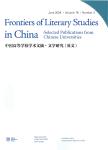Recollecting Ruins: Republican Nanjing and Layered Nostalgia in Bai Xianyong's Taipei People and Ye Zhaoyan's Naniing 1937: A Love Story
Recollecting Ruins: Republican Nanjing and Layered Nostalgia in Bai Xianyong's Taipei People and Ye Zhaoyan's Naniing 1937: A Love Story作者机构:College of Liberal Arts Department of Asian and Middle Eastern Languages and StudiesTemple University Philadelphia PA 19122 USA
出 版 物:《Frontiers of Literary Studies in China-Selected Publications from Chinese Universities》 (中国高等学校学术文摘·文学研究(英文版))
年 卷 期:2017年第11卷第2期
页 面:375-397页
学科分类:0501[文学-中国语言文学] 0303[法学-社会学] 0810[工学-信息与通信工程] 0502[文学-外国语言文学] 08[工学] 081002[工学-信号与信息处理] 0811[工学-控制科学与工程]
主 题:Bai Xianyong Taipei People Ye Zhaoyan Nanjing 1937 nostalgia,Republican Nanjing ruins
摘 要:This paper examines the layered nostalgia embodied by one specific spatiotemporal site, the war-torn Republican capital of Nanjing, in Bai Xianyong's 1971 collection of short stories Taipei People and in Ye Zhaoyan's 1996 novel Nanjing 1937: A Love Story. Both Nanjing's historical reputation as an ancient capital for several short-lived dynasties and its special role in narrating Chinese identity and cultural traditions across the 1949 divide contribute to the city's symbolic significance in the literary tradition of ruin gazing. In the two texts under discussion, the layered ruins of Republican Nanjing--reminiscent of the decadent Six Dynasties (220-589) and witnessing the historical violence and physical as well as metaphorical dislocation resulting from World War II and the Chinese Civil War--constitute an ideal site for reflecting upon not only personal and national traumas but also traditional-modern tensions from diversified stances and angles. The related but divergent trajectories taken by Bai's and Ye's nostalgic gaze--one projected from the United States in the 196os by way of post-1949 Taipei and the other geographically located in contemporary Nanjing but culturally distanced from it--form an interesting dialogue, which may shed light on the fluidity of ruin gazing at a nexus of identity questions with reference to the embrace of modernity.



